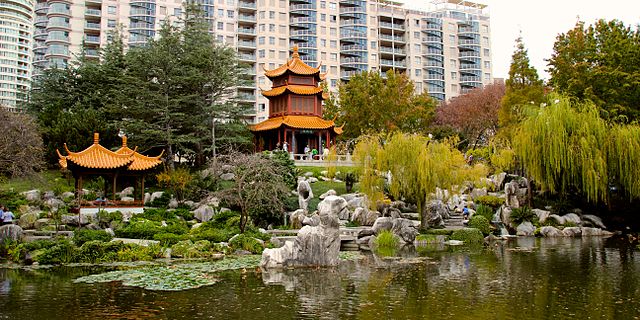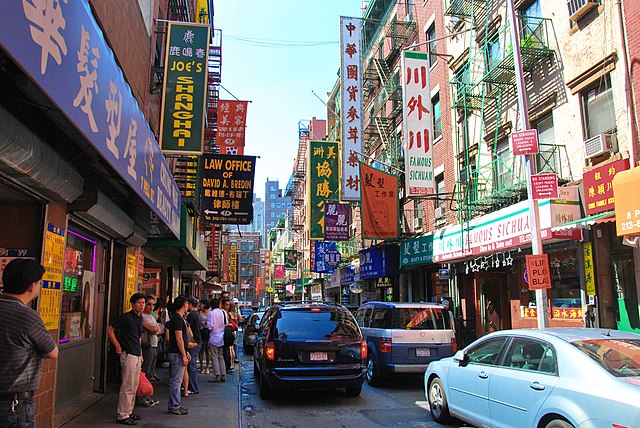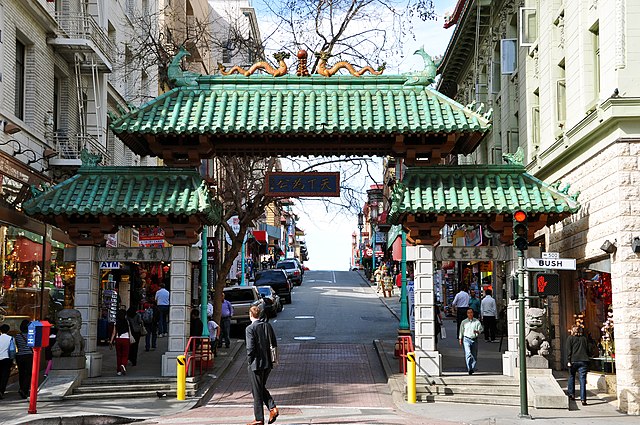恭喜發財 (That's Kung hei fat choy! to you). As hundreds of millions ring in the Year of the Monkey for Chinese New Year (aka Lunar New Year) today, I'm reminded of one of the Chinese diaspora's great gifts to travelers across the planet: funky Chinatowns where the age-old culture of the Middle Kingdom (and increasingly, other parts of Asia) meets a variety of others in sometimes fascinating ways.
The best ones are the traditional ones, which developed organically, as opposed to a recent trend of "Chinatowns" fabricated in various cities like Las Vegas and Dubai which are essentially themed malls. But ersatz or historic, today is a big day in all of them.
Here's my shortlist of favorites:
London
The U.K.'s first Chinatown grew up in Liverpool all the way back in the 1830s, but perhaps the most vigorous today is to be found in Soho between Shaftesbury Avenue, Leicester Square, and Picadilly Circus, with its central thoroughfare Gerrard Street (above), which started to grow in the 1970s; its central appeal today is more than 80 restaurants - not just Chinese but featuring all manner of Asian cuisine, including Vietnamese, Japanese, and Thai. Food can be divine but often not the service (one eatery, the multi-storey Wong Kei, actually attracted a following due to its ostentatiously rude waiters, and many were disappointed when it reopened in 2014 after a refurbishment with - gasp - less nasty service. WTF, Wong Key?!). Today's New Year celebrations are held mostly in Trafalgar Square.
New York City
The biggest of the Big Apple's nine Chinatowns, in lower Manhattan along Canal Street and side streets south of it (though it's also starting to encroach upon Little Italy, north of Canal), is the largest Chinese enclave outside Asia, and one of the oldest. It's a mix of shops (both traditional and tourist-orientated); bakeries; sidewalk stands hawking cheap designer knockoffs; and a plethora of restaurants large and small (on my last trip back, I was again blown away by the exquisite dim sum at the gargantuan Jing Fong). You can also visit the extremely well-done, multi-media Museum of Chinese in America, and rub shoulders with the locals lighting incense and chanting Buddhist prayers at temples like Mahayana (133 Canal St.) and the venerable, much smaller Eastern States Temple (64 Mott St.).
Paris
Arranged around Avénue de Choisy, Avénue d'Ivry, and Rue de Tolbiac in the 13th arrondissement near Place d'Italie, the Quartier Chinois (aka Quartier Asiatique) is Europe's largest Chinatown. And while may not be quite as classically picturesque as the others on this list, but still offers a fascinating cultural experience with a particularly French twist in the form of various businesses run by immigrants of former Indochina colonies Vietnam, Laos, and Cambodia. One must stop is an unforgettable sensory experience at Tang Frères (48 Avénue d'Ivry), one of the continent's largest Asian markets, and I would also encourage visitors to sample probably unfamiliar cuisines such as Laoatian (for example at Lao Lane Xiang, 102 Ave. d'Ivry) and Cambodian (Mondol Kiri, 159 Ave. de Choisy).
San Francisco
America's oldest Chinatown, by virtue of massive 19th-century immigration from across the Pacific (which has helped give this city the most Asian cast of any in the country), San Fran's version vies with New York's as the country's most classic, as well as the largest outside Asia. Its covers 24 blocks of downtown, centered on Grant Avenue (with the classic "dragon gate", above) and Stockton Street (a bit less trafficked by tourists and more by locals, giving it the feel of a Hong Kong neighborhood). Ethnically most of said locals are Cantonese, and they and previous generations have created a fantastic array of dining and shopping options, as well as places to learn about Chinese-American history and cutlure such as the Chinese Cultural Center of San Francisco and the Chinese Historical Society of America Museum and Learning Center.

Sydney
Asians are the main source of immigration in Australia these days, and the Chinatown in the country's biggest city (as does that of Melbourne not far to the north) reflects that. It's located in the Haymarket area between Darling Harbour and Central Station, and along with a variety of eateries and shops on streets like Factory Street and Little Hay Street, there are also many of them occupying a large complex on Hay Street called Market City. It's also well worth popping over to nearby Darling Harbour for a visit to the lovely Chinese Garden of Friendship (above), built in 1988 in cooperation with Sydney's sister city Guangzhou (Canton).
Vancouver
San Francisco's fellow Pacific-Rim North American city also been receiving enormous immigration from across the pond for more than a century, and these days Wong, Chan, and Lee are among the most common names here (some have waggishly dubbed the city "Hongcouver"). Vancouver's bustling main Chinatown (which touts itself as "North America's cleanest", lol), revolving around downtown's Pender Street (above), dates back to the Shanghai Alley and Canton Alley of the late 19th and early 20th centuries. Besides the usual pan-Asian restaurants, herbal shops, and other traditional emporia, there are a number of landmarks and attractions well worth noting, such as the Chinese Cultural Centre of Greater Vancouver, Sam Kee Building (the world's narrowest!), and the Dr. Sun Yat Sen Classical Chinese Garden (which hosts a multi-day "temple fair" to mark the new year).
photos | Caseman, Aurelien Guichard, chensiyuan, thbz, Wyncliffe, Xicotencatl





Comments